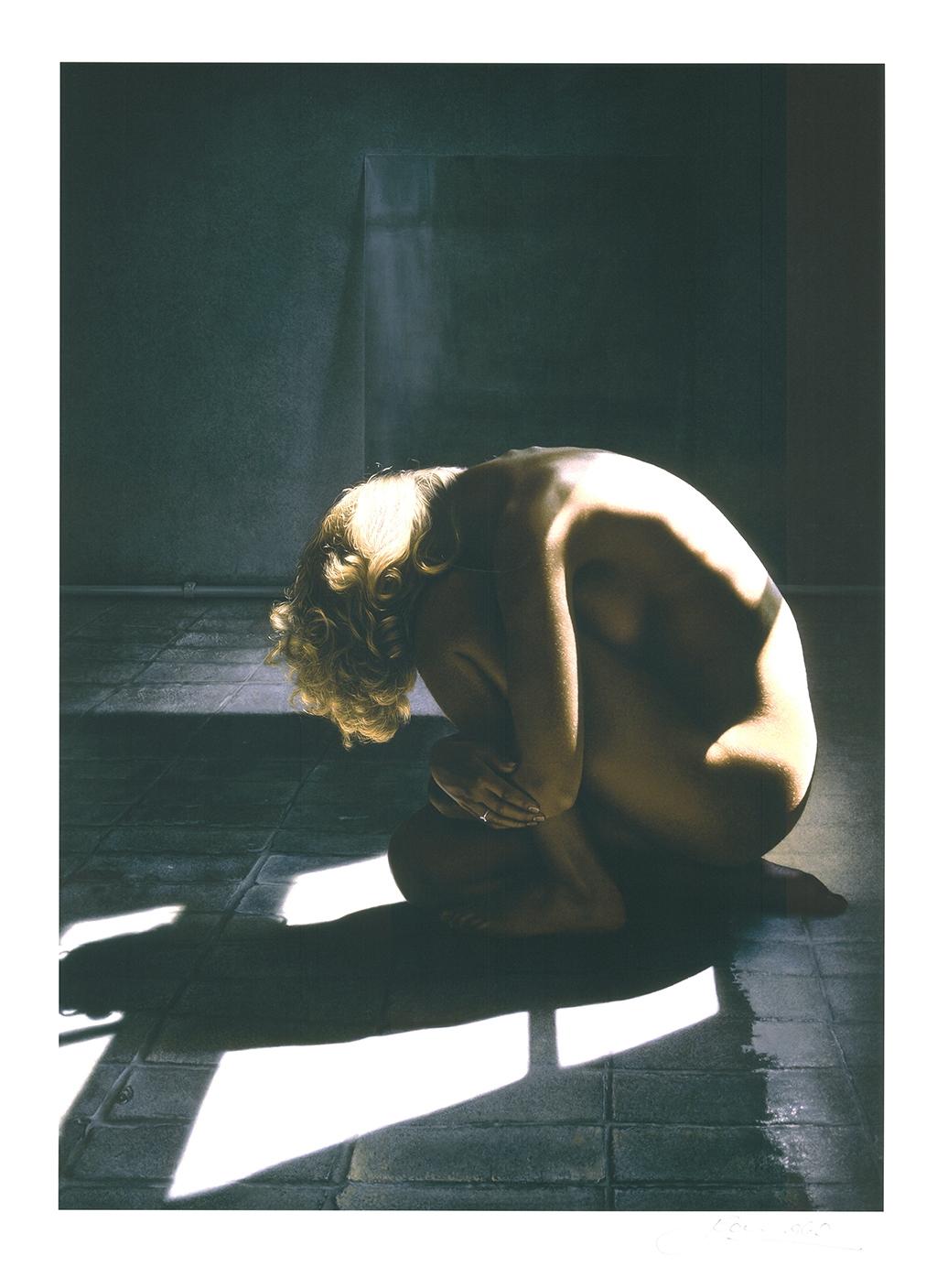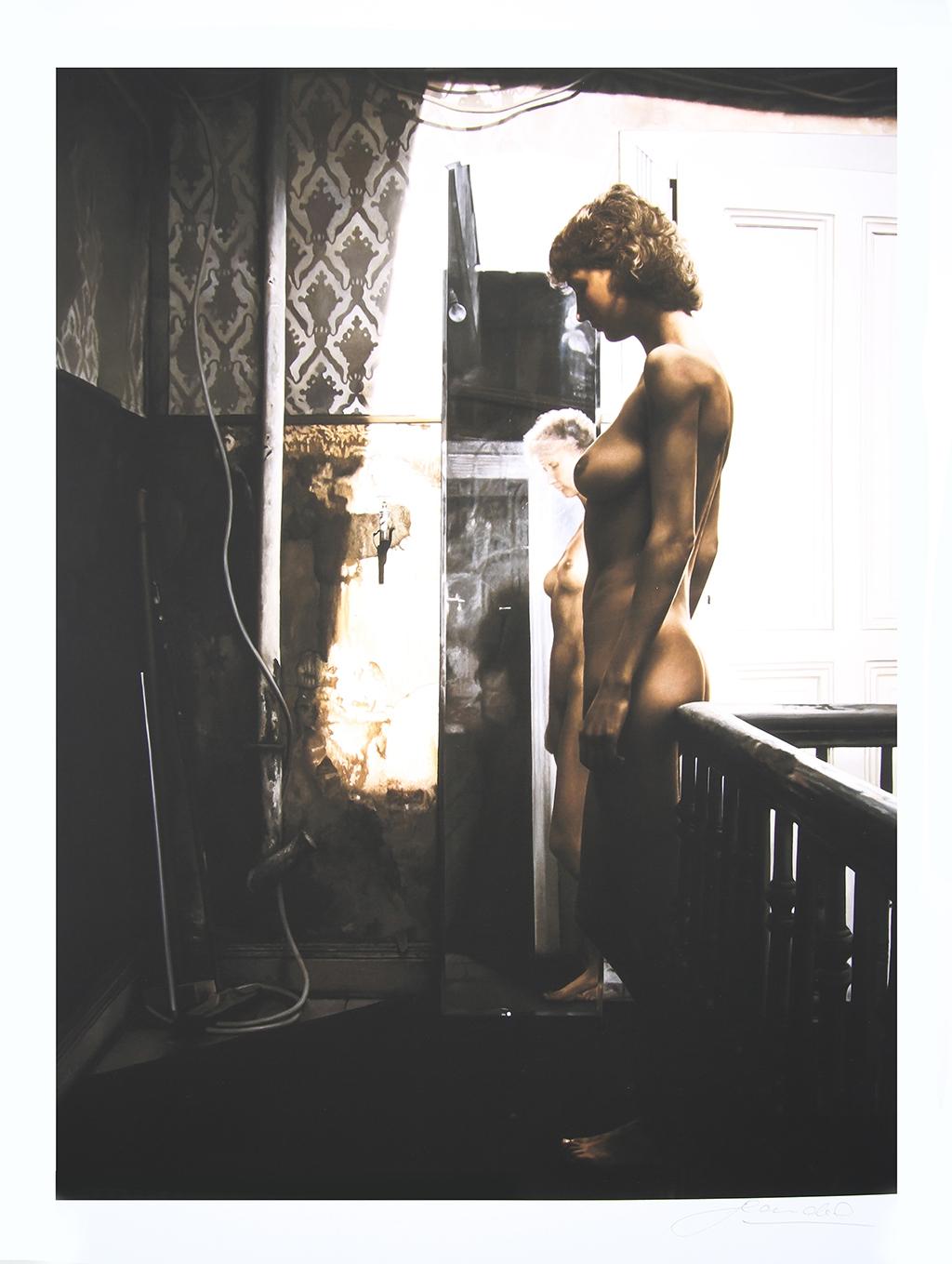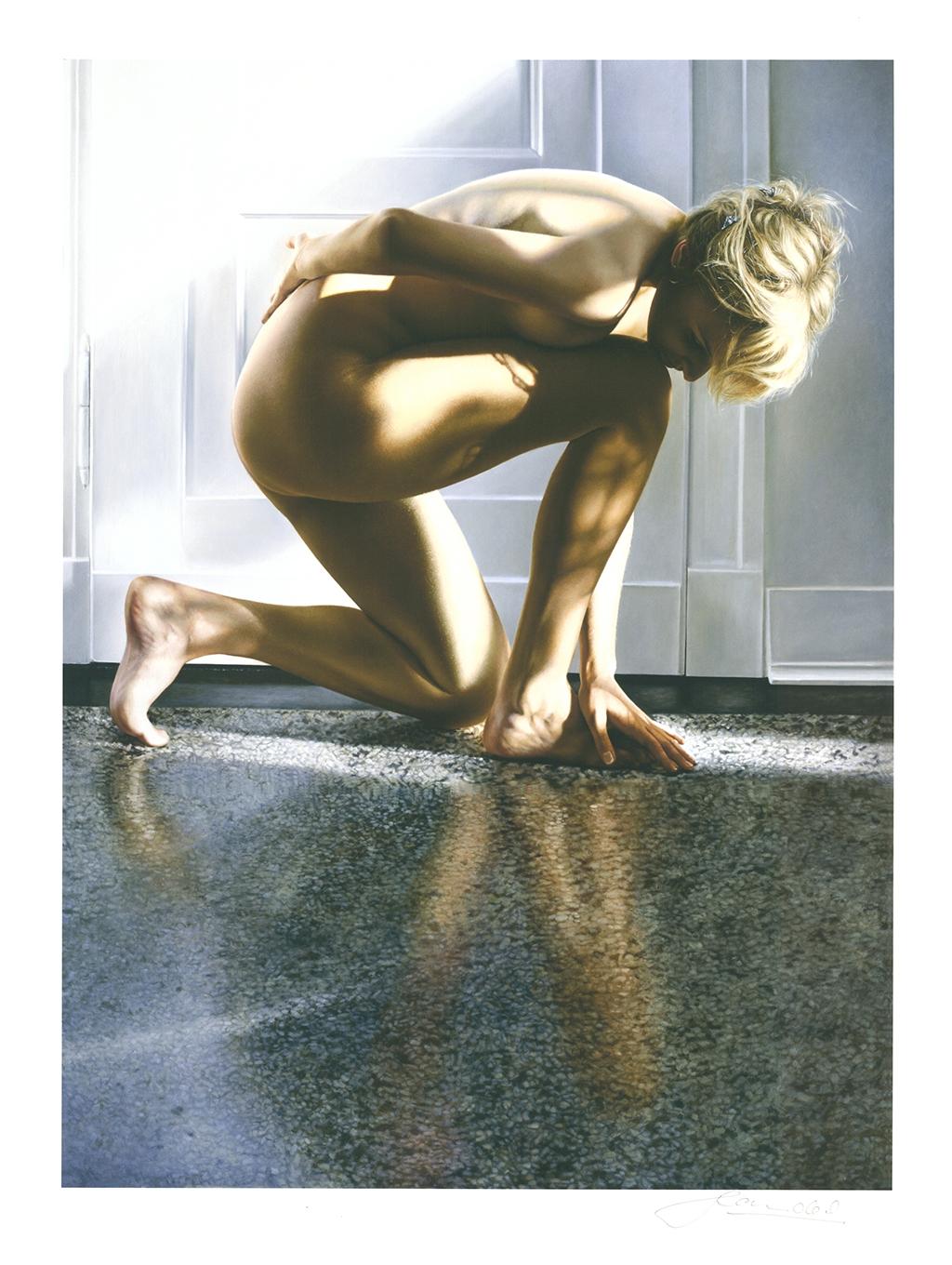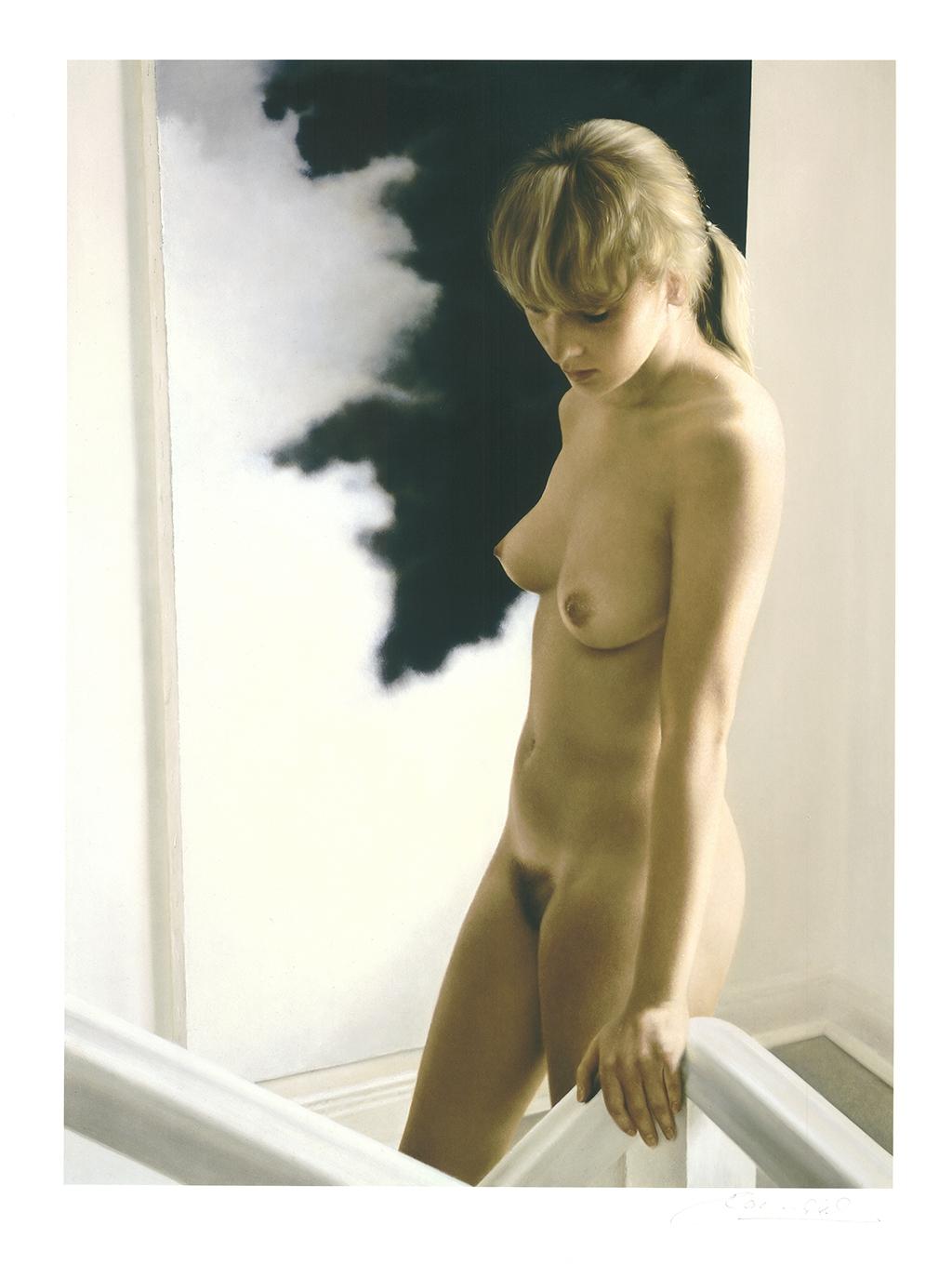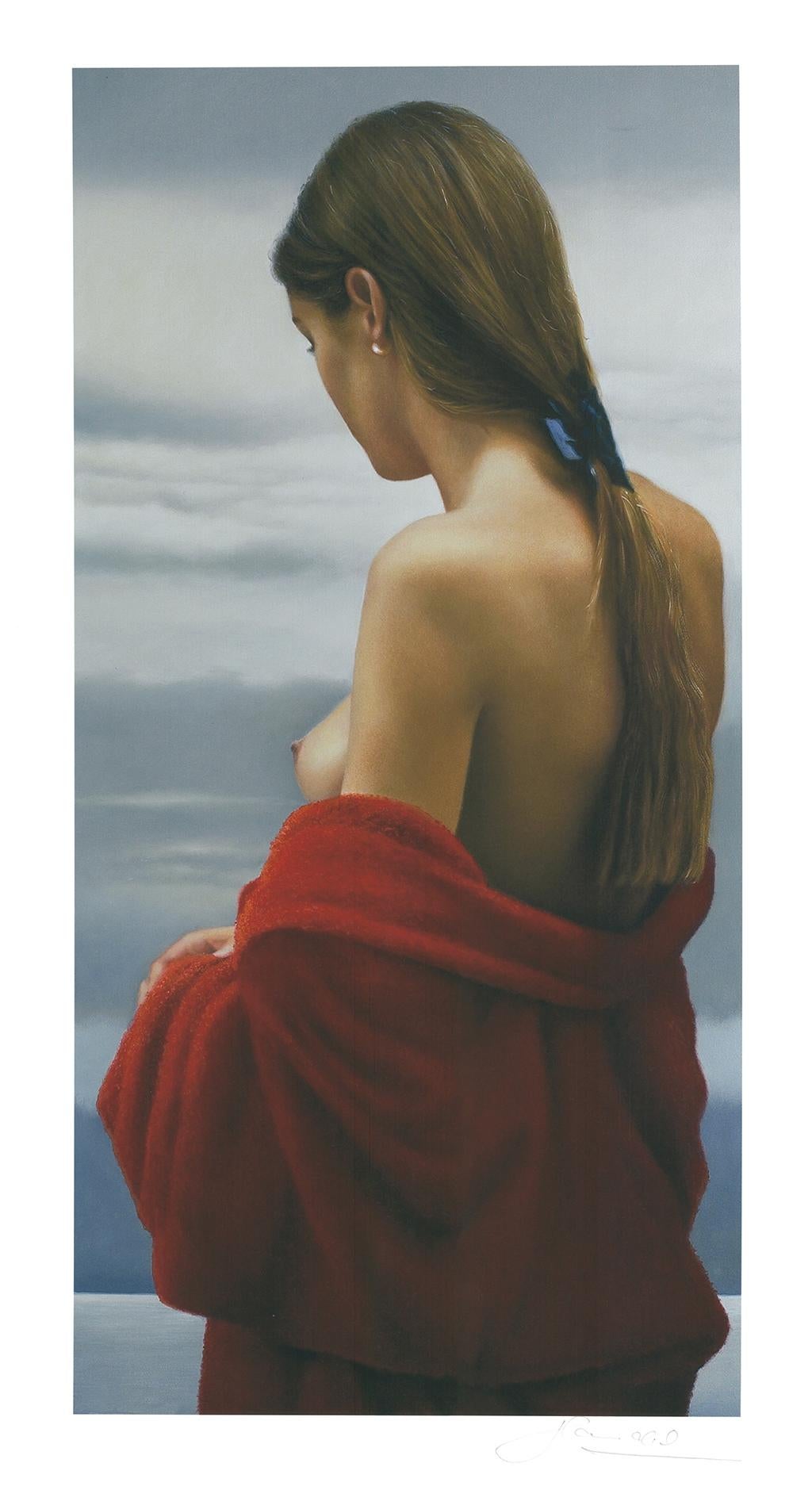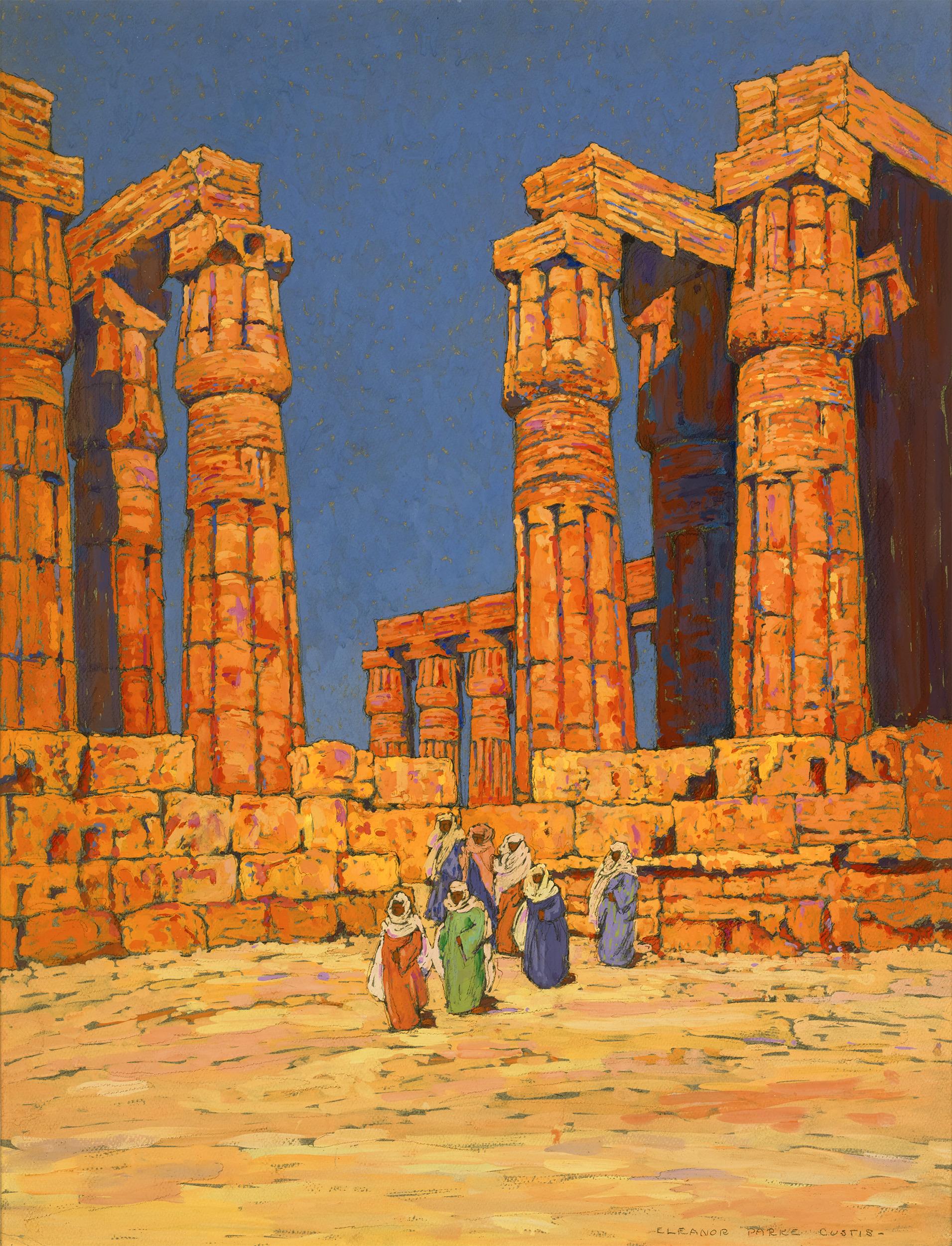Items Similar to Judaica Hand-Written Calendrical Manuscript from Władysławowie, 1837
Want more images or videos?
Request additional images or videos from the seller
1 of 21
UnknownJudaica Hand-Written Calendrical Manuscript from Władysławowie, 18371837
1837
About the Item
Exceedingly rare, one-of-a-kind handwritten Jewish calendrical manuscript from Władysławowie, 1837.
This book belongs in a museum.
Rebound beautifully by James MacDonald & Co. Photos are the actual photos of the book. See all photos.
The history of the Jewish calendar may be divided into three periods—the Biblical, the Talmudic, and the post-Talmudic. The first rested purely on the observation of the sun and the moon, the second on observation and reckoning, the third entirely on reckoning.
The study of astronomy was largely due to the need of fixing the dates of the festivals. The command (Deut. xvi. 1), "Keep the month of Abib," made it necessary to be acquainted with the position of the sun; and the command, "Also observe themoon and sanctify it," made it necessary to study the phases of the moon.
The oldest term in Hebrew for the science of the calendar is ("fixing of the month"); later ("sanctification of the new moon"); ("sanctification of the new moon by means of observation"); ("sanctification of the new moon by means of reckoning"); ("science of fixing the month"); ("rules for the sanctification of the new moon"). Among other names besides these we find (" the secret of intercalation"). The medieval and modern name is Babylonian Calendar.
The Babylonian year, which influenced the French time reckoning, seems to have consisted of 12 months of 30 days each, intercalary months being added by the priests when necessary. Two Babylonian calendars are preserved in the inscriptions, and in both each month has 30 days as far as can be learnt. In later times, however, months of 29 days alternated with those of 30. The method of intercalation is uncertain, and the practise seems to have varied.
The Babylonian years were soli-lunar; that is to say, the year of 12 months containing 354 days was bound to the solar year of 365 days by intercalating, as occasion required, a thirteenth month. Out of every 11 years there were 7 with 12 months and 4 with 13 months.
Strassmeier and Epping, in "Astronomisches aus Babylon," have shown that the ancient Babylonians were sufficiently advanced in astronomy to enable them to draw up almanacs in which the eclipses of the sun and moon and the times of new and full moon were predicted ("Proc. Soc. Bib. Arch., 1891-1892," p. 112).
The Talmud (Yerushalmi, Rosh ha-Shanah i. 1) correctly states that the Jews got the names of the months at the time of the Babylonian exile.
There is no mention of an intercalary month in the Bible, and it is not known whether the correction was applied in ancient times by the addition of 1 month in 3 years or by the adding of 10 or 11 days at the end of each year.
Astronomers know this kind of year as a bound lunar year. The Greeks had a similar year. Even the Christian year, although a purely solar year, is forced to take account of the moon for the fixing of the date of Easter. The Mohammedans, on the other hand, have a free lunar year.
It thus seems plain that the Jewish year was not a simple lunar year; for while the Jewish festivals no doubt were fixed on given days of lunar months, they also had a dependence on the position of the sun. Thus the Passover Feast was to be celebrated in the month of the wheat harvest (), and the Feast of Tabernacles, also called , took place in the fall. Sometimes the feasts are mentioned as taking place in certain lunar months (Lev. xxiii.; Num. xxviii., xxix.), and at other times they are fixed in accordance with certain crops; that is, with the solar year.
In post-Talmudic times Nisan, Siwan, Ab, Tishri, Kislew, and Shebaṭ had 30 days, and Iyyar, Tammuz, Elul, Ḥeshwan, Ṭebet, and Adar, 29. In leap-year, Adar had 30 days and We-Adar 29. According to Pirḳe Rabbi Eliezer, there was a lunar solar cycle of 48 years. This cycle was followed by the Hellenists, Essenes, and early Christians.
In the times of the Second Temple it appears from the Mishnah (R. H. i. 7) that the priests had a court to which witnesses came and reported. This function was afterward taken over by the civil court (see B. Zuckermann, "Materialien zur Entwicklung der Altjüdischen Zeitrechnung im Talmud, "Breslau, 1882).
The fixing of the lengths of the months and the intercalation of months was the prerogative of the Sanhedrin, at whose head there was a patriarch or . The entire Sanhedrin was not called upon to act in this matter, the decision being left to a special court of three. The Sanhedrin met on the 29th of each month to await the report of the witnesses.
From before the destruction of the Temple certain rules were in existence. The new moon can not occur before a lapse of 29½ days and ⅔ of an hour. If the moon could not be exactly determined, one month was to have 30 days and the next 29. The full months were not to be less than 4 nor more than 8, so that the year could not be less than 352 days nor more than 356. After the destruction of the Temple (70 C.E.) Joḥanan ben Zakkai removed the Sanhedrin to Jabneh. To this body he transferred decisions concerning the calendar, which had previously belonged to the patriarch. After this the witnesses of the new moon came direct to the Sanhedrin.
Every two or three years, as the case might be, an extra month was intercalated. The intercalation seems to have depended on actual calculation of the relative lengths of the solar and lunar years, which were handed down by tradition in the patriarchal family. Moreover, it was possible to judge by the grain harvest. If the month of Nisan arrived and the sun was at such a distance from the vernal equinox that it could not reach it by the 16th of the month, then this month was not called Nisan, but Adar Sheni (second).
On the evening before the announcement of the intercalation the patriarch assembled certain scholars who assisted in the decision. It was then announced to the various Jewish communities by letters. To this epistle was added the reason for the intercalation. A copy of such a letter of Rabban Gamaliel is preserved in the Talmud (Sanh. xi. 2).
The country people and the inhabitants of Babylonia were informed of the beginning of the month by fire-signals, which were readily carried from station to station in the mountain country. These signals could not be carried to the exiles in Egypt, Asia Minor, and Greece, who, being accordingly left in doubt, celebrated two days as the new moon.
Owing to the weather it was frequently impossible to observe the new moon. In order to remove any uncertainty with regard to the length of the year on this account, it was ordained that the year should not have less than 4 nor more than 8 fullmonths. After the fixing of the calendar it was settled that the year should not have less than 5 nor more than 7 full months.
R. Gamaliel II. (80-116 C.E.) used to receive the reports of the witnesses in person, and showed them representations of the moon to test their accuracy. On one occasion he fixed the first of Tishri after the testimony of two suspected witnesses. The accuracy of the decision was disputed by Rabbi Joshua, who was thereupon commanded by the patriarch to appear before him prepared for travel on the day which was, according to his (Joshua's) calculation, the Day of Atonement, an order with which he most reluctantly complied.
During the persecutions under Hadrian and in the time of his successor, Antoninus Pius, the martyr Rabbi Akiba and his pupils attempted to lay down rules for the intercalation of a month.
Under the patriarchate of Simon III. (140-163) a great quarrel arose concerning the feast-days and the leap-year, which threatened to cause a permanent schism between the Babylonian and the Palestinian communities—a result which was only averted by the exercise of much diplomacy.
Under the patriarchate of Rabbi Judah I., surnamed "the Holy" (163-193), the Samaritans, in order to confuse the Jews, set up fire-signals at improper times, and thus caused the Jews to fall into error with regard to the day of the new moon. Rabbi Judah accordingly abolished the fire-signals and employed messengers. The inhabitants of countries who could not be reached by messengers before the feast were accordingly in doubt, and used to celebrate two days of the holidays. By this time the fixing of the new moon according to the testimony of witnesses seems to have lost its importance, and astronomical calculations were in the main relied upon.
One of the important figures in the history of the calendar was Samuel (born about 165, died about 250), surnamed "Yarḥinai" because of his familiarity with the moon. He was an astronomer, and it was said that he knew the courses of the heavens as well as the streets of his city (Ber. 58b). He was director of a school in Nehardea (Babylonia), and while there arranged a calendar of the feasts in order that his fellow-countrymen might be independent of Judea. He also calculated the calendar for sixty years. His calculations greatly influenced the subsequent calendar of Hillel. According to Bartolocci his tables are preserved in the Vatican. A contemporary of his, R. Adda (born 183), also left a work on the calendar.
Mar Samuel reckoned the solar year at 365 days and 6 hours, and Rab Adda at 365 days, 5 hours, 55 minutes, and 25 25/57 seconds.
In 325 the Council of Nice was held, and by that time the equinox had retrograded to March 21. This council made no practical change in the existing civil calendar, but addressed itself to the reform of the Church calendar, which was soli-lunar on the Jewish system. Great disputes had arisen as to the time of celebrating Easter. Moreover, the Church was not fully established, many Christians being still simply Jewish sectarians. A new rule was therefore made, which, while still keeping Easter dependent on the moon, prevented it from coinciding with Passover.
Under the patriarchate of Rabbi Judah III. (300-330) the testimony of the witnesses with regard to the appearance of the new moon was received as a mere formality, the settlement of the day depending entirely on calculation. This innovation seems to have been viewed with disfavor by some members of the Sanhedrin, particularly Rabbi Jose, who wrote to both the Babylonian and the Alexandrian communities, advising them to follow the customs of their fathers and continue to celebrate two days, an advice which was followed, and is still followed, by the majority of Jews living outside of Palestine.
Under the reign of Constantius (337-361) the persecutions of the Jews reached such a height that all religious exercises, including the computation of the calendar, were forbidden under pain of severe punishment. The Sanhedrin was apparently prevented from inserting the intercalary month in the spring; it accordingly placed it after the month of Ab (July-August).
The persecutions under Constantius finally decided the patriarch, Hillel II. (330-365), to publish rules for the computation of the calendar, which had hitherto been regarded as a secret science. The political difficulties attendant upon the meetings of the Sanhedrin became so numerous in this period, and the consequent uncertainty of the feast-days was so great, that R. Huna b. Abin made known the following secret of the calendar to Raba in Babylonia: Whenever it becomes apparent that the winter will last till the 16th of Nisan, make the year a leap-year without hesitation.
This unselfish promulgation of the calendar, though it destroyed the hold of the patriarchs on the scattered Judeans, fixed the celebration of the Jewish feasts upon the same day everywhere. Later Jewish writers agree that the calendar was fixed by Hillel II. in the year 670 of the Seleucidan era; that is, 4119 A.M. or 359 C.E. Some, however, as Isaac Israeli, have fixed the date as late as 500. Saadia afterward formulated calendar rules, after having disputed the correctness of the calendar established by the Karaites. That there is a slight error in the Jewish calendar—due to inaccuracies in the length of both the lunar and the solar years upon which it is based—has been asserted by a number of writers.
According to Isidore Loeb the Jewish cycle in 19 years exceeds the Gregorian by 2 hours, 8 minutes, and 15.3 seconds. This makes a difference in a hundred cycles (1900 years) of 8 days, 21 hours, 45 minutes, and 5 seconds ("Tables du Calendrier Juif," p. 6, Paris, 1886).
The assumed duration of the solar year is 6 minutes, 39 25/57 seconds in excess of the true astronomical value, which will cause the dates of the commencement of future Jewish years, which are so calculated, to advance from the equinox a day in error in 216 years ("Encyc. Brit." s. v. " Calendar," 9th ed., iv. 678).
The following calculation of the differences between the Jewish and Gregorian lengths of the year and month was privately made for the writer by Prof. William Harkness, formerly astronomical director of the United States Naval Observatory at Washington:
1 year = 365d. 05h. 997 12/19 ḥalaḳim or 365d. 05h. 55m. 25.439 s. 48m. 46.069 s. true value (29d. 12h. 793 ḥalaḳim) 235 = 6939d. 16h. 595 ḥalaḳim = 19 years 29d. 12h. 44m. 3⅓s. True value = 29d. 12h. 44m. 02.841s.
According to these calculations the Jewish year exceeds the Gregorian by 6 m. 39.37s. and the Jewish month by .492 s. Insignificant as these differences may appear, they will cause a considerable divergence in the relations between Nisan and spring as time goes on, and may require a Pan-Judaic Synod to adjust.
Mashallah, 754-813; Sahl ben Rabban al-Ṭabari, 800; Sind ben Ali, 829-832; Shabbethai b. Abraham Donolo, 949; Ḥasan, judge of Cordova, 972; Abraham b. Ḥiyya, d. 1136; Abraham ibn Ezra, 1093-1168; Isaac b. Joseph Israeli, 1310; Immanuel b. Jacob of Tarrascon, 1330-1346; Elia Misraḥi, d. 1490; Abraham b. Samuel Zacuto, professor of astronomy at Saragossa, 1492, Moses Isserles, d. 1573; David Gans (d. 1613), a friend of Keppler and Tycho Brahe; Raphael Levi Hannover, 1734; Israel Lyons, 1773, member of an English polar expedition. Besides the following works of the Talmudic period: , Baraita of the secret of intercalation (R. H. xx. 2); (Pirḳe de Rabbi Eliezer ha-Gadol b. Hyrcanus).
- Creation Year:1837
- Dimensions:Height: 7 in (17.78 cm)Width: 5 in (12.7 cm)Depth: 2 in (5.08 cm)
- Medium:
- Movement & Style:
- Period:
- Condition:Houdini Magical Hall of Fame Loho Vetz of Ancaster.
- Gallery Location:Boca Raton, FL
- Reference Number:
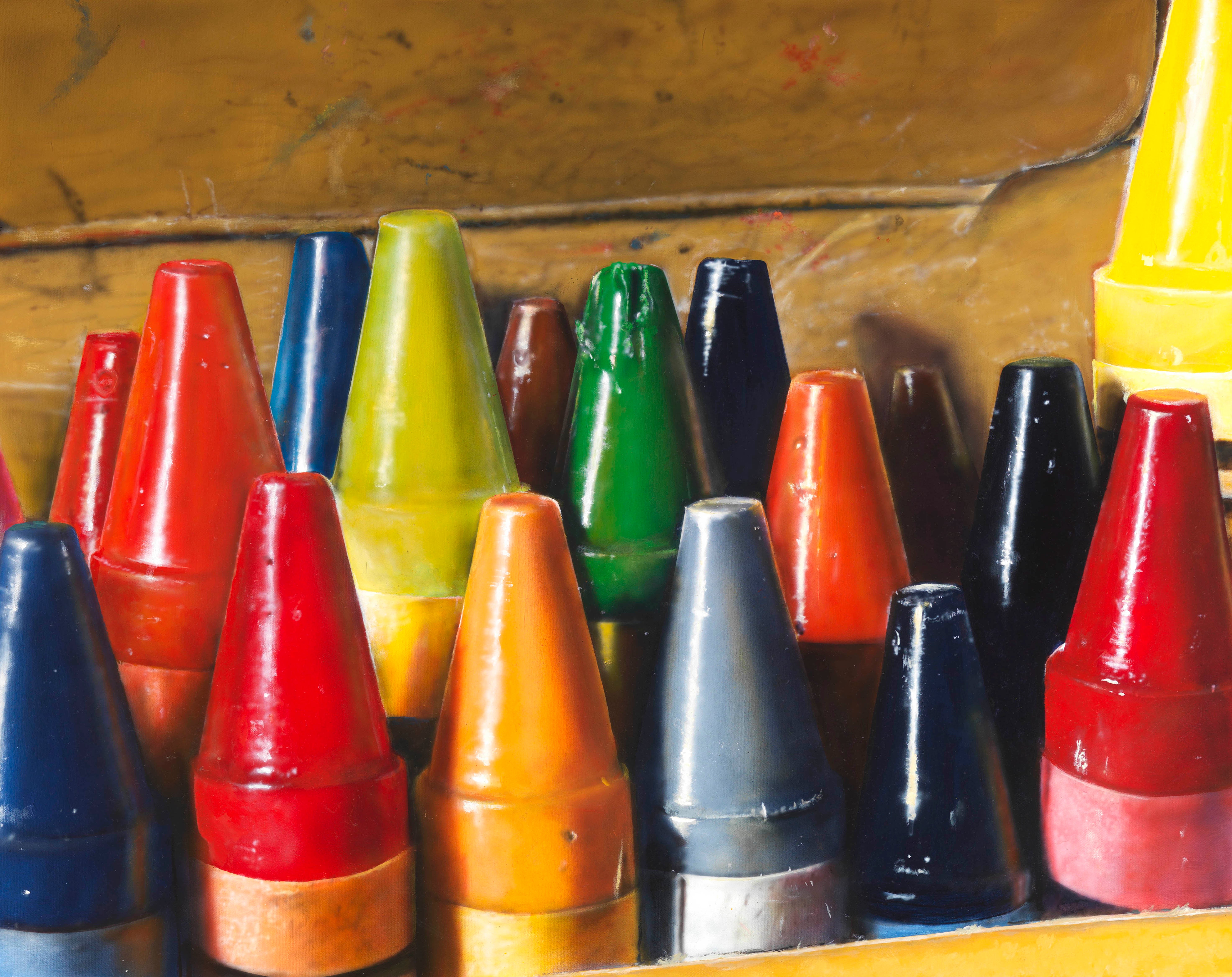
About the Seller
5.0
Gold Seller
These expertly vetted sellers are highly rated and consistently exceed customer expectations.
Established in 1985
1stDibs seller since 2014
157 sales on 1stDibs
Typical response time: <1 hour
- ShippingRetrieving quote...Ships From: Boca Raton, FL
- Return PolicyA return for this item may be initiated within 60 days of delivery.
More From This SellerView All
- Incredible Collection of Original Billy Crystal Mr. Saturday Night Scripts EtcLocated in Boca Raton, FLLooking for an amazing gift for the Billy Crystal fanatic? Forget about all these supposedy signed cards, baseballs, programs etc. Do you really think he sits around all day signing all those things? Offered here is an incredible collection, consisting of: 1. The original first draft movie script...Category
1990s Realist Mixed Media
MaterialsPaper
- The Complete Illustrated Book of Card Magic by Walter B. Gibson 1969 OOPLocated in Boca Raton, FLThe Complete Illustrated Book of Card Magic by Walter B. Gibson 1969 This is not one of the many reprints issued later. This is the actual book from 1969! Mr. Gibson wrote dozens of great books on magic and many other topics and also ghost-wrote for others. Book is in excellent condition, like new. See photos. The complete illustrated book of card magic: the principles and professional techniques fully revealed in text and photographs. Details: All basic secrets, master methods, and the greatest magic tricks done with cards – explained and illustrated step-by-step by WALTER B. GIBSON, one of the greatest authorities in the history of magic! If you have ever been baffled by the flawless performance of a card trick . . . if you have ever dreamed of amazing your friends with a deck of cards . . . this astonishing, giant of a book is for you. It shows how all the tricks are done – and how to do them yourself. And it’s easy! Because Walter Gibson – friend and close associate of Houdini and Blackstone – explains every trick every step of the way! The ultimate reference on card magic You’ll learn Houdini’s own “top change,” how to prepare a deck, how to force a spectator to choose the card you want him to. You’ll find nine pages of gambler’s tricks. In all, you’ll learn 23 simplified tricks; 89 basic sleights; 86 methods of card control; 34 patterns of card discoveries; 18 special tricks; 51 flourishes; 9 color changes; 85 full-pack tricks; 33 special types of tricks; 17 dealing tricks; and 20 prepared tricks. All in the 200,000 clearest, most authoritative words ever written on the subject. Plus . . . 379 Photo-illustrations. Every photograph is captioned and every one was taken with mirrors. Which means that, as Walter Gibson performed, he saw his hands and chose the clearest position for the photograph . You see every step of the trick exactly. Page 1 Triumphant Threes Page 2 As Many As You Page 3 Royal Roundup Page 5 Add-a-Card Page 6 Predicted Heap Page 8 Thieves and Sheep Page 9 Improved Piano Mystery Page 10 Mental Mastery Page 11 Double Choice Page 11 Super Mental Mastery Page 13 Kings and Queens Page 14 Royal Marriages Page 16 Red-Card Prediction Page 17 Super-Red Prediction Page 19 Twenty-Seven Trick Page 20 Fifth Card Page 21 One Choice in Five Page 21 One Out of Many Page 22 Transposed Cards Page 23 Color Sense Page 24 Three Color Packets Page 25 Forty-Nine Cards Page 29 Ways of Dealing Cards Page 29 Simple or Reverse Deal Page 30 Turnup Deal Page 31 Group Deal Page 32 End Deals Page 32 Bottom Draw Page 32 Cutting the Pack Page 33 Single Cut Page 33 Multiple Cut Page 33 Undercut Page 34 One-Hand Table Cut Page 35 Turnover Move Page 37 Shuffling the Pack Page 38 Standard Overhand Page 39 Reverse Overhand Page 39 Front-and-Back Overhand Shuffle Page 40 Dovetail Shuffle Page 41 Outer-Corner Shuffle Page 41 False Cuts Page 41 Double Pickup Page 41 Double Laydown Page 42 Top-Card Blind Page 43 Simulated Cut Page 43 False Three-Heap Cut Page 44 False Running Cut Page 45 False Triple Cut Page 47 False Shuffle Cut Page 48 False Shuffles Page 48 False Dovetail Page 49 Small-Group Dovetail Page 50 Push-Through Shuffle Page 51 V Twist Page 52 Inverted V Twist Page 52 False Overhand Shuffles Page 53 Top-to-Bottom Shuffle Page 53 Double Pullaway Page 53 Cut Shuffle Page 54 False Front-and-Back Shuffle Page 54 False Shuffle Devices Page 54 In Jog Page 56 Out Jog Page 56 Break Page 58 Second Deal Page 60 Turnover Second Deal Page 62 Bottom Deal Page 64 Methods of Presenting the Pass Page 66 Standard Pass Page 69 Slow-Motion Pass Page 71 End-over-End Pass Page 73 Slow-Motion End-over-End Pass Page 76 Turnover (Herrmann) Pass Page 79 Delayed Turnover Pass Page 80 Modified Turnover Pass Page 82 Charlier Pass Page 85 Screening the Charlier Pass Page 85 Turnaway Page 85 Behind the Back Page 85 Behind the Arm Page 86 Right-Hand Screen Page 86 Full-Front Pass Page 87 Charlier Turnover Page 87 How to Palm Cards Page 87 Top Palm Page 88 Simple Side Palm Page 88 Palm Holds Page 90 Improved Side Palm Page 91 Side Count Page 91 Spread Count Page 91 End Count Page 92 Spring Palm (Spring Count) Page 93 Thumb Count Page 93 End Palm Page 94 Corner Palm Page 96 Turnover Palm Page 96 Second Palm Page 97 Swivel Palm Page 98 Bottom Palm Page 98 Standard Bottom Palm Page 99 Bottom Count Page 100 Push-Out Page 100 Thumb Steal Page 101 Replacing Palmed Cards Page 101 Simple Replacement Page 102 Turnover Replacement Page 102 Riffle Replacement Page 102 Drop-On Page 103 Bulge Page 104 Pickup Page 104 Cut Pickup Page 105 Spread Replacement Page 105 Ways of Changing a Card Page 105 Bottom Change Page 108 From Right to Left Page 108 Sleeve Change Page 109 Top Change Page 111 From Right to Left Page 111 Top-Change Deal Page 112 Take-Away Change Page 114 Concealed Top and Bottom Changes Page 119 Palm Change Page 120 Throw Change Page 122 Spring Change Page 124 Alternatives for the Pass Page 124 Alternatives for the Standard Pass Page 124 Sleeve to Sleeve Page 125 Sleeve Switch Page 125 Top-Middle-Bottom Page 126 Revolving Pass Page 127 Riffle Pass Page 128 Throw Pass Page 128 Alternatives for End-over-End Page 128 Crosswise Bridge Page 130 Longitudinal Bridge Page 131 Single Card Page 132 Double End-Over Page 133 Forward Drop Page 134 Push-Back Page 136 Fan Grip Page 137 Shuffle Pass Page 137 Simple Shuffle Pass Page 138 Reverse Shuffle Pass Page 139 Special Shuffle Pass Page 139 Corner Crimp Page 140 Upward Crimp Page 141 Downward Crimp Page 142 Random Card Page 143 Various Sleights I Page 143 Half Pass Page 143 With the Standard Pass Page 143 With the Turnover Pass Page 143 With the Modified Turnover Pass Page 143 With the Charlier Pass Page 144 Half Flip Page 144 Turning the Pack Page 144 Turnover Page 145 Layover Page 145 Glimpsing a Card Page 145 Dovetail Glimpse Page 146 Shuffle Glimpse Page 146 Squeeze Glimpse Page 147 Quick Top Glimpse Page 148 Expert Glimpse Page 148 Gambler’s Glimpse Page 150 Various Sleights II Page 150 Glide Page 151 Slip (Slip Cut) Page 152 Slide Page 153 Flipover Page 154 Double Lift Page 154 Outward Lift Page 156 Inward Lift Page 156 Side Lift Page 157 Remarks on Lifts Page 157 Triple Lift Page 158 Thumb-Off Page 158 Drop Page 159 Buckle Page 160 Buckle Count Page 160 False Count Page 161 Forcing a Card Page 162 Standard Force Page 163 Behind the Back Page 164 Alternative Procedure Page 164 Joker Force Page 165 Variant Page 165 Face-Front Force Page 167 Charlier Force Page 167 Glide Force Page 168 Cards in the Case Page 169 Turnover Force Page 169 Riffle Force Page 169 With a Short Card Page 170 Double Deal Page 171 Double Turnover Force Page 171 Special Controls Page 171 Peek Page 172 Tilt-Back Page 173 Side-Drop Page 173 Corner Grip Page 174 Side Steal Page 176 Riffle to Pocket Page 177 Multiple Push-Through Page 179 Palm Steal Page 180 How to Switch Packs Page 180 Simple Pocket Switch Page 181 Duplex Pocket Switch Page 181 Two-Pack-Trick Switch Page 181 Single-Trick Switch Page 181 Pocket-Handkerchief Switch Page 182 Handkerchief on Table Page 182 End Shuffle Page 182 Basic Shuffle Page 183 Simple Card Location Page 185 Flash Force Page 185 Bottom Glimpse Page 186 End Shuffle Card Control Page 187 False End Shuffle Page 187 End Shuffle Force Page 188 Top Glimpse Page 189 Hit the Deck Page 189 Knockout Page 190 Countdown Page 190 Name the Card Page 191 Card in Wallet Page 191 Double Detection Page 191 Cards Caught in Midair Page 192 Card Through Handkerchief Page 192 Handkerchief Repeat Page 192 Magnetized Card Page 193 Jumping Card Page 193 Any Number Down Page 193 Double Count Page 193 Turnup Count Page 194 Calling All Cards Page 194 Chosen Card Up Sleeve Page 194 Follow-Up Sleeve Page 195 Any Number Up Page 195 Card Finds Card Page 195 Your Card Is Next Page 195 Best Card in Pocket Page 196 Pocket Prediction Page 197 Baffling Queen Page 197 Like Seeks Like Page 198 Three-Card Climax Page 199 One Chance in Four Page 200 Third Card Page 201 Double-Dealer Page 202 A Neat Card Location Page 202 Three in a Row Page 203 Find Five Cards Page 203 Klip-Kard Page 204 Card, Clip, and Ribbon Page 204 Sit-Down Strike Page 205 Six-Card Repeat Page 209 Six-Card Repeat Without Extra Cards Page 211 Twelve Cards Up Sleeve Page 215 Slap Vanish Page 215 Packet-to-Packet Page 219 Reversed Passage Page 220 Red and Blue Packets Page 221 Between Ten and. Twenty Page 223 Thirty-third Card Page 225 Quick Prediction Page 226 Do As I Do Page 227 Shuffle Do As I Do Page 228 Triple Do As I Do Page 229 Card Through Handkerchief and Case Page 230 Phonepathic Card (Super Telephone Telepathy) Page 233 Twenty-Card Memory Page 235 Ten-Card Memory Page 237 Spring Page 239 Spring Location Page 239 With Additional Cards Page 240 Another Spring Location Page 241 Spring Pass Page 242 Arm Spread Page 243 Slide-Down Page 243 Turnover Page 244 Slide Toss Page 244 Somersault Page 245 Turnover Catch Page 246 Inward Catch Page 246 Backhand Catch Page 247 One-Hand Catch Page 247 Double Catch Page 247 Shuffled Spread Page 248 Halfway Turnover Catch Page 249 Waterfall Page 250 Electric Pack Page 250 Fan Sleights Page 250 One-Hand Fan Page 251 Fan Production at Elbow Page 252 Face-Front Fan Production Page 254 Repeat Fan Production Page 254 Vanishing Pack Page 256 Reappearing Fan Page 258 Card-Fan Pack Switch Page 259 Fan Force Page 262 One-Hand Fan Force Page 263 Fan-Force Location Page 263 Reverse Fan Sweep Page 265 Fan-Sweep Location Page 267 Fan-Sweep Palm Page 269 Pressure Fan Page 270 Ornamental Fans Page 271 Finger Fan Page 272 Closing the Fan Page 272 Blank Fan Page 273 Split Fans Page 274 Special Fanning Packs Page 274 Giant Fan Page 275 Double Fan Page 275 Wedge (Faro) Shuffle Page 276 Card Vanishes and Productions Page 276 Back-and-Front Palm Page 279 Showing the Back of the Hand Page 281 Alternative Mode of Transfer Page 281 Vanish and Reproduction of Additional Cards Page 285 Six-Card Vanish and Production Page 286 Continuous Card Production Page 287 Continuous Fan Production Page 290 Cards at Finger Tips Page 291 Snap Production Page 293 Perfection Card Production Page 295 Perfect Color-Change Routine Page 295 Thumb Steal Color Change Page 297 Palm Color Change Page 298 Color-Change Routine Page 301 Erdnase Color Change Page 304 Vertical Color Change Page 307 Transposed Spot Page 308 Visible Change Page 311 Visible Change Routine Page 316 With a New Pack Page 316 Multiple Mentality Page 317 Three-in-a-Row Page 318 Cards Foretold Page 318 Double Detection Page 319 Seven-Handed Poker Page 321 Special Setups Page 321 Pack-to-Pack Page 322 Suit-for-Suit Page 324 Alternative Method Page 325 Red-and-Blue Coincidence Page 326 Climax Card Change Page 327 Three-Card Climax Page 328 Two Minds in Tune Page 330 Card Foretold Page 331 Simplex Coincidence Page 332 Multiple Surprise Page 333 Divided Packs Page 333 Red and Black Page 334 Pairing the Suits Page 334 Odds and Evens Page 334 Suits and Values Page 335 Shuffling and Cutting the Divided Pack Page 335 With the Dovetail Shuffle Page 335 With the Overhand Shuffle Page 335 Cutting the Pack Page 336 Double Choice Page 336 One-Way Packs Page 338 Handling the One-Way Pack Page 338 Sweep Replacement Page 338 Turnover Turnabout Page 339 Dividing the Pack Page 339 Shuffling the Pack Page 339 Bringing Turned Cards to Top Page 340 Setting Up the One-Way Pack Page 340 Natural Affinity Page 341 Red-and-Black Baffler Page 342 Pointer Cards Page 343 Prearranged Packs Page 344 Naming a Chosen Card Page 344 Multiple Detection Page 345 Suit and Value Page 345 Three Heaps Page 346 Concentration Page 346 Lucky Thirteen Page 347 Card at Any Number Page 348 Where Is My Card? Page 348 Perfect Bridge Deal Page 349 Faked Packs Page 349 Peek Deck Page 350 Naming Chosen Cards Page 350 Vanished Cards from Pockets Page 350 Two-Pack Climax Page 350 Special Speller Page 351 Notes on Peek Decks Page 351 Brain Wave Deck Page 353 Impromptu Brain Wave Page 354 Follow-Up to Impromptu Brain Wave Page 355 Alternative Brain Wave Page 356 Alternative Brain Wave (with Spread-Out) Page 357 Svengali Pack Page 358 In the Force Page 358 When the Pack is Shuffled Page 358 Display Riffle Page 359 Fan Discovery Page 359 Count to Chosen Card Page 359 Think of a Card Page 360 Wrapped Pack Page 360 Unseen Card Page 360 Reversed Card Page 360 Card on Chosen Heap Page 360 Ascending Card Page 361 Card-Stabbing Climax Page 361 Svengali Outdone Page 361 Mene-Tekel Pack Page 363 Mental Detection Page 363 Card in Pocket Page 363 Face-Up Card Page 364 Face-Up Repeat Page 364 Red and Blue Page 365 Two Packets Page 366 Remote Control Page 367 Wizard Pack (Strippers) Page 368 Controlling a Chosen Card Page 369 Tricks with the Wizard Pack Page 369 Dropaway Cards Page 369 Cards Under Handkerchief Page 369 Four-Ace Deal Page 369 Cut to Any Number Page 370 Red-and-Black Fantasy Page 370 Prediction Pack Page 372 Spelling Tricks Page 372 Triple Mental Speller Page 373 Alternating Speller Page 374 Multiple-Speller Mystery Page 376 Spell It Yourself Page 377 The Card You Took Page 378 Shuffled Speller Page 379 Spelling Bee...Category
1960s Modern Mixed Media
MaterialsMagazine Paper
- New York City Abstract Expressionist Between Abstraction, Calligraphy & GraffitiLocated in Boca Raton, FLNew York City Abstract Expressionist Between Abstraction, Calligraphy & Graffiti Vivian Muller presents an homage to Greek and Roman mythology, ...Category
2010s Abstract Expressionist Abstract Drawings and Watercolors
MaterialsPaper, Charcoal
- Ceiling of the Paris Opera HouseBy Marc ChagallLocated in Boca Raton, FLCeiling of the Paris Opera House The value is in the beautiful framing. Please note the shipping cost as the piece is very large (frame is 47" x 47"). In 1960, the Minister of ...Category
20th Century Romantic Interior Prints
MaterialsInk, Paper
- Hamilton Garden at McMaster UniversityLocated in Boca Raton, FLWe are a 1stdibs Platinum Seller with 100% 5-star reviews. From the Estate of Irving Zucker. Formerly exhibited at the Art Gallery of Hamilton. A beautiful example of Greck's semi...Category
1980s Figurative Paintings
MaterialsCanvas, Gouache
- Jim's Steaks -- Original Oil Painting -- Please watch attached videoBy Mark SchiffLocated in Boca Raton, FLPlease see accompanying video. We are a 1stdibs Platinum Seller with 100% 5-star reviews. One cannot appreciate this painting on a computer screen; in real life, it is absolutely amazing. Because you cannot appreciate it on a computer screen, our gallery has a unique policy. When purchasing from us, the buyer has sixty days to determine if they want to keep the artwork. If not, the buyer returns to piece to us for full refund, and we pay the shipping both ways! A collector should consider several factors when deciding from whom to purchase artwork online. Check the location of the seller. When one buys from a foreign seller, one also has to consider the problems of getting the piece through Customs. There are often delays and considerable fees to pay in order to import the item. When purchasing from us, we ship the same day and you receive it via FedEx the next day, no problems or hassles. When one purchases from an auction house, one pays a buyer’s premium of anywhere from 23% to 28% over the “hammer price”. So when one “wins” an auction for $20,000, the actual price paid is more like $25,000. By contrast, when purchasing from us, the price agreed to is the price paid by the buyer, no hidden fees. Secondly, when one purchases from an auction house, the buyer pays the packing and shipping fee, which are usually exorbitant. By contrast, when purchasing from us, the price includes packing and shipping. Thirdly, when one purchases from an auction house, the sale is final. If one receives the piece and is not 100% satisfied with it, there is nothing the buyer can do about it. They are stuck with it. By contrast, when purchasing from us, the buyer has sixty days to determine if they want to keep it. If not, the buyer returns to piece to us for full refund, and we pay the shipping both ways. About Mark Schiff — Animated by photographs that reflect his personal life, Mark Schiff’s paintings are fueled by what makes him happy. Through his open touch and signature blending method, he lends his artistic perception to the original photographic compositions captured on his Leica. Mark’s creative vision has been alive since he was a boy. As a child he spent his summers observing life as he rode the trolley back and forth to art classes at the Pratt Institute. During his future travels to Europe, Mark’s eye for light and photography merged with his passion for painting at the Jeu de Paume in Paris; which triggered his career in photorealism. Mark is well known for painting objects that people can identify and emotionally connect with. His work is distinctly marked by a rich palette and the luminous range of light he paints into his compositions. Each painting is a true extension of his vision and can take up to 200 hours to complete. Mark Schiff’s work has been commissioned by the well-known brands The Hershey Company and Tropicana. His private collectors include A-list celebrities and also corporate collectors in the US and abroad. Possessing a strong philanthropic nature, Mark donates both his time and works to charitable organizations such as Big Brothers Big Sisters, The Ronald McDonald House, Make-A-Wish Foundation, The Humane Society and the Special Olympics. Photorealism is widely viewed as one of this century’s most exciting genres of art. When a photorealistic painting is viewed from afar, it looks like a photograph. Only when getting very close to the art does the viewer realize that it is in fact not a photo, but rather an oil painting. Photorealism can also refer to sculptures. Duane Hanson is known as the greatest photorealistic sculptor of all time. Some of the greatest photorealistic painters include Mark Schiff, Richard Estes, Ralph Goings, Charles Bell and Audrey Flack. Photorealist Mark Schiff was born in Bedford Stuyvesant, Brooklyn, in a neighborhood known as a kuchalane, a Yiddish word which Schiff defines as a place where everyone (from the Old Country) ended up living on the same street, and most likely knowing each other’s business. His Russian grandfather came to the US before the revolution and both his parents were first generation American. Even at five years of age, Mark showed exceptional talent. In the summer, his mother permitted him to travel by himself on the trolley for art classes at the Pratt institute. He continued studying there until he was eleven and the family moved to Great Neck. Except for a few art classes in high school and playing baritone horn in the band, Mark focused on other things besides art, especially when his mother worried for his financial future, kept insisting “that Jewish boys don’t starve to death.” His father made a good living as a production man in textiles so Mark, who had spent years doing the rounds of knitting mills with his father, decided to major in textile chemistry at North Carolina State. ROTC was mandatory on his campus and he did two years in order to be eligible for officer status. He won the Armed Forces Chemical Association award and thought for sure that he would be assigned chemical work, but instead was made a tank commander and stationed at Fort Knox. Not exactly what his heart yearned for, but a good job awaited him at Sandoz, a Swiss company that made dyestuff. What perfect training for someone who would soon be working in wonderful rich colors on canvas. He went on to receive his MBA degree from Hofstra University, left Sandoz and was hired to sell at a spinning mill. He liked it. In 1976 he joined Bennett Berman Associates and had an opportunity to buy the spinning mill Spun Fibers. But what of art? In the early days, Elsie, his wife of fifty-two years, had a problem with the large amount of space his canvases occupied in their one bedroom apartment. Mark took up photography instead, which only required a small darkroom. Photography was a natural ally for his eventual return to painting in the photorealistic style. It was on his second trip to Europe that Mark fell in love with painting all over again. The impressionistic museum, Jeu de Paume in Paris, renewed his passion and it’s been non-stop since then. Out came the brushes, but this time, he used his love and skill of photography, and built a style based on the photographs he had taken, bringing them to life with paint. Mark was still not painting to sell until in 1990 when someone discovered and desperately wanted his candy bar (Sweet Series) painting. Mark didn’t want to let go of that particular piece, but was finally convinced to sell it and a second candy painting to this ardent art and candy lover. Two years later, Mark was commissioned to make three paintings of this man’s new Ferrari. Some of the artists who have inspired his work are Richard Estes, Sandy Scott, Chuck Close, and Charles Bell. He appreciates the work of Ken Keeley, but unlike Keeley’s hard-lined/tape and ruler style, Mark prefers an open touch, using the blending method. Mark’s subject matters range from candy bars to spice racks to soda cans and soda bottles. He photographs with a Leica M-7 and each painting can take up to 200 or more hours to complete. His palette is rich; his subjects, be it a fire engine or a pretzel cart, take on a luminous quality, always photoreal, but even more beautiful. Mark developed his own technique for working with bottles by painting a canvas all black, so that the transparency of the bottles allows a wonderful range of light to filter through. The same light and reflection can be seen in the black rotary phone...Category
Early 2000s American Realist Still-life Paintings
MaterialsCanvas, Oil
You May Also Like
- Peter Handel - "Ute 1" - giclée print - nude - signedBy Peter HandelLocated in Winterswijk, NLPeter Handel - "Ute 1". Giclée on Hahnemühle Velvet, handsigned. High-quality art print after the original painting: Peter Handel transforms nude photographs painterly into highly...Category
21st Century and Contemporary Realist Prints and Multiples
MaterialsPaper, Giclée
- Peter Handel - "On Staircase" - giclée print - nude - signedBy Peter HandelLocated in Winterswijk, NLPeter Handel - "On Staircase". Giclée on Hahnemühle Velvet, handsigned. High-quality art print after the original painting: Peter Handel transforms nude photographs painterly into...Category
21st Century and Contemporary Realist Prints and Multiples
MaterialsPaper, Giclée
- Peter Handel - "Stefanie 2" - giclée print - nude - signedBy Peter HandelLocated in Winterswijk, NLPeter Handel - "Stefanie 2". Giclée on Hahnemühle Velvet, handsigned. High-quality art print after the original painting: Peter Handel transforms nude photographs painterly into h...Category
21st Century and Contemporary Realist Prints and Multiples
MaterialsPaper, Giclée
- Peter Handel - "Judith On Stairs" - giclée print - nude - signedBy Peter HandelLocated in Winterswijk, NLPeter Handel - "Judith On Stairs". Giclée on Hahnemühle Velvet, handsigned. High-quality art print after the original painting: Peter Handel transforms nude photographs painterly ...Category
21st Century and Contemporary Realist Prints and Multiples
MaterialsPaper, Giclée
- Peter Handel - "Vera 2" - giclée print - nude - signedBy Peter HandelLocated in Winterswijk, NLPeter Handel - "Vera 2". Giclée on Hahnemühle Velvet, handsigned. High-quality art print after the original painting: Peter Handel transforms nude photographs painterly into highl...Category
21st Century and Contemporary Realist Prints and Multiples
MaterialsPaper, Giclée
- Karnak by Eleanor Parke CustisBy Eleanor Parke CustisLocated in New Orleans, LAEleanor Parke Custis 1897-1983 American Karnak Signed 'Eleanor Parke Custis -' (lower right) Gouache and charcoal on paper American painter Eleanor Parke Custis demonstrates her mastery of the gouache medium in Karnak. A celebration of color and a relic of the artist’s travels abroad, the composition is well-balanced, exuding photojournalistic and documentarian qualities. In Karnak, Custis paints a compelling and dynamic image of a great ancient Egyptian ruin. Seven distant men, likely Bedouins dressed...Category
20th Century Realist Landscape Paintings
MaterialsPaper, Charcoal, Gouache
